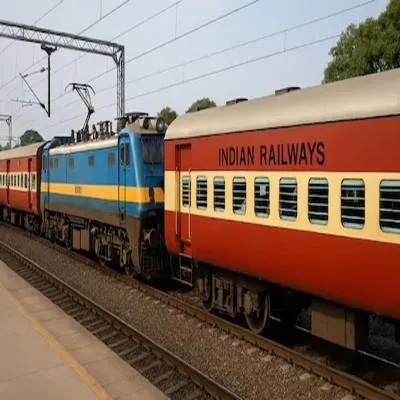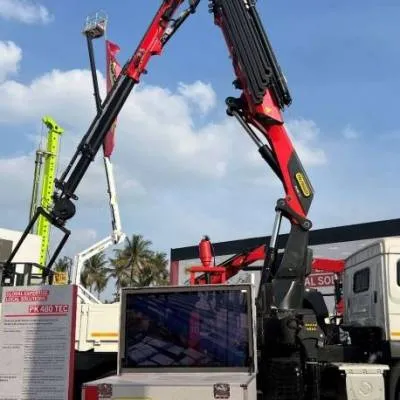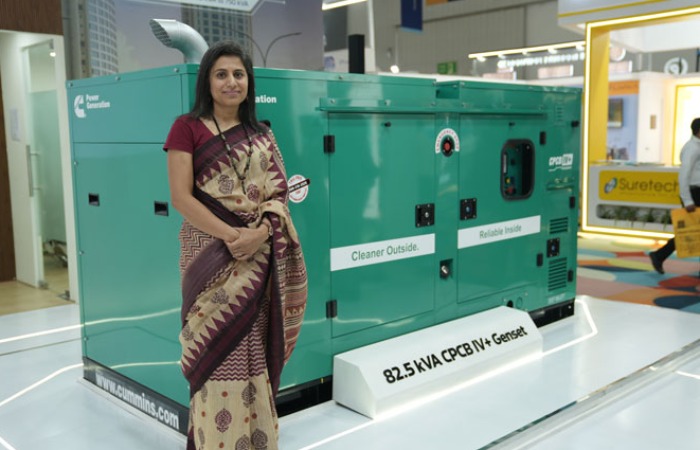Schedule a Call Back
How CE Sector Can Enable Grassroots Infra Growth
2025-11-25

India’s construction equipment (CE) industry has rapidly evolved from being a domestic workhorse to a global force. Once dependent on imported technologies, it now thrives on indigenous innovation, supplying world-class machinery for both domestic and international markets. Indian-made equipment is not only building highways and skyscrapers at home but is also fuelling infrastructure projects across Africa and Southeast Asia, effectively challenging global giants.
This phenomenal transformation is the result of focused policy, industry innovation, and strategic investment. According to ICEMA, India is now the largest CE market by volume and is set to become the second largest globally by 2030. The sector saw 26 per cent growth in FY24, driven by initiatives like Atmanirbhar Bharat, the National Infrastructure Pipeline (NIP), and Gati Shakti. A CII-Kearney report projects the industry will grow from $16 billion to $45 billion by 2030 at a 19 per cent CAGR—driven not just by urban mega-projects, but increasingly by the expansion of infrastructure into rural and semi-urban India.
Infrastructure for Inclusive Growth
With over 65 per cent of India’s population residing in rural areas, sustainable national development hinges on creating robust, reliable infrastructure in these underserved regions. This includes not only physical infrastructure like rural roads, housing, and electrification, but also critical services such as water supply, irrigation, and digital connectivity. Government programs like the Pradhan Mantri Gram Sadak Yojana (PMGSY), Jal Jeevan Mission, and the Rural Housing Scheme have dramatically expanded the scope of construction activity beyond metro cities. As a result, the demand for CE machinery that is compact, fuel-efficient, rugged, and versatile has grown significantly.
This shift calls for purpose-built innovation. Construction equipment must now meet the specific challenges of rural India—variable terrain, resource constraints, limited maintenance access, and affordability. Machines like backhoe loaders, telehandlers, mini excavators, and low-maintenance cranes have become indispensable for small-scale, decentralised projects. Designed for agility and durability, these machines are enabling the construction of everything from irrigation canals to village roads.
But equipment alone is not enough. A strong after-sales ecosystem is equally crucial. Ensuring availability of spare parts and servicing in remote locations, enabling financing options for small contractors, and offering skilling programmes to train local operators and mechanics are all vital for long-term impact. These interventions not only ensure successful project execution but also create local employment and entrepreneurial opportunities.
Broader Economic Engine
The construction equipment sector plays a far-reaching role in India’s economy. The construction industry contributes nearly 8 per cent to the GDP and employing over 40 million people, directly and indirectly. According to industry estimates, India’s construction sector is poised to become the world’s third largest by 2025, with growth projected at over 11 per cent annually.
This progress is closely tied to rural infrastructure improvements, which have a powerful multiplier effect. Roads boost mobility, market access, and reduce logistics costs for farmers and small businesses. Electrification drives industrial productivity and supports healthcare and education. Water infrastructure enables clean drinking water and sustainable agriculture. Affordable housing uplifts living standards and fosters social inclusion. In enabling these outcomes, the construction equipment industry becomes more than just a supplier—it becomes a key partner in India’s inclusive growth story.
The next frontier for CE is not just size or scale—it’s technological leadership and sustainability. Indian manufacturers are incorporating advanced technologies such as telematics, AI, and IoT to improve machine performance, enable predictive maintenance, and enhance operational efficiency. Autonomous machinery and smart fleet management are becoming increasingly common, helping contractors manage costs and productivity on a global scale.
At the same time, sustainability is taking centre stage. India is emerging as a pioneer in green construction equipment—introducing electric cranes, hybrid and hydrogen-powered machines, and low-emission engines. As global infrastructure pivots toward eco-conscious development, Indian CE firms are positioning themselves at the forefront of this transformation. The world no longer sees Indian manufacturers as low-cost alternatives but as innovative, strategic partners. This transformation reflects a larger economic shift—from a country that once imported technology to one that now exports advanced, world-class solutions. Indian machines are shaping skylines, industrial zones, and transport corridors across the globe, highlighting the nation's engineering excellence and cost innovation.
Made in India, Made for Bharat
Looking ahead, the true potential of India’s CE sector lies not only in its global ambition but in its domestic impact—particularly in Bharat. This means embracing a vision rooted in innovation, localisation, and inclusion. Companies must develop cost-effective, durable equipment suited to Indian geographies and contractor realities. They must invest in training rural youth to operate and maintain this machinery, and partner with financial institutions to offer flexible credit and leasing options.
Ultimately, building Bharat means building from the ground up—with infrastructure that lifts the underserved and powers grassroots progress. The construction equipment sector stands at the forefront of this mission, not merely supplying tools, but enabling livelihoods, strengthening local economies, and reinforcing India’s path toward equitable, sustainable development. In this journey toward a self-reliant India, the CE industry doesn’t just support infrastructure—it powers it.


Subscribe Now
Subscribe to our Newsletter & Stay updated
RECENT POSTS
Popular Tags
Folliow us
Related Stories
Integration with OEMs is fundamental to our success
Shveta Arya, Managing Director, Cummins India
How do you see the Indian construction equipment market ev...
Read More
Cat Introduces Services Commitment With CVA From 2026
Caterpillar has announced a new Services Commitment linked to its Cat Customer Value Agreement (CVA), aimed at reducing downtime and simplifying ...
Atlas Copco Appoints Bhavin Pandya as India Compressor GM
Atlas Copco Group has appointed Bhavin Pandya as General Manager to lead its Compressor Technique Customer Center in India, reinforcing its leade...











